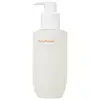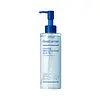What's inside
What's inside
 Key Ingredients
Key Ingredients

 Benefits
Benefits

 Concerns
Concerns

 Ingredients Side-by-side
Ingredients Side-by-side

C12-15 Alkyl Benzoate
AntimicrobialPentaerythrityl Tetraethylhexanoate
EmollientIsopropyl Palmitate
EmollientPentaerythrityl Tetraisostearate
EmollientCaprylic/Capric Triglyceride
MaskingPEG-20 Glyceryl Triisostearate
EmollientPEG-8 Isostearate
EmulsifyingCocos Nucifera Oil
MaskingDextrin Palmitate
EmulsifyingParfum
MaskingLimonene
PerfumingGlyceryl Behenate/Eicosadioate
EmollientCoco-Caprylate/Caprate
EmollientSqualane
EmollientLinalool
PerfumingWater
Skin ConditioningButylene Glycol
HumectantPrunus Armeniaca Kernel Oil
MaskingPinus Koraiensis Seed Oil
PerfumingSesamum Indicum Seed Oil
EmollientCamellia Japonica Seed Oil
EmollientCoix Lacryma-Jobi Ma-Yuen Seed Extract
Skin ConditioningCitrus Unshiu Peel Extract
MaskingCastanea Crenata Shell Extract
Skin ConditioningSpirodela Polyrhiza Extract
Skin ConditioningPrunus Mume Seed Extract
Skin ConditioningNelumbo Nucifera Seed Extract
AntimicrobialC12-15 Alkyl Benzoate, Pentaerythrityl Tetraethylhexanoate, Isopropyl Palmitate, Pentaerythrityl Tetraisostearate, Caprylic/Capric Triglyceride, PEG-20 Glyceryl Triisostearate, PEG-8 Isostearate, Cocos Nucifera Oil, Dextrin Palmitate, Parfum, Limonene, Glyceryl Behenate/Eicosadioate, Coco-Caprylate/Caprate, Squalane, Linalool, Water, Butylene Glycol, Prunus Armeniaca Kernel Oil, Pinus Koraiensis Seed Oil, Sesamum Indicum Seed Oil, Camellia Japonica Seed Oil, Coix Lacryma-Jobi Ma-Yuen Seed Extract, Citrus Unshiu Peel Extract, Castanea Crenata Shell Extract, Spirodela Polyrhiza Extract, Prunus Mume Seed Extract, Nelumbo Nucifera Seed Extract
Ethylhexyl Palmitate
EmollientSorbeth-30 Tetraoleate
EmulsifyingCaprylic/Capric Triglyceride
MaskingSorbitan Sesquioleate
EmulsifyingCitrus Aurantium Dulcis Peel Oil
MaskingPelargonium Graveolens Flower Oil
MaskingCeramide NP
Skin ConditioningCholesterol
EmollientPanthenol
Skin ConditioningHyaluronic Acid
HumectantHydrolyzed Hyaluronic Acid
HumectantHydroxypropyltrimonium Hyaluronate
Hydrolyzed Sodium Hyaluronate
Skin ConditioningSodium Acetylated Hyaluronate
HumectantPotassium Hyaluronate
Skin ConditioningSodium Hyaluronate Crosspolymer
HumectantSodium Hyaluronate
HumectantMacadamia Integrifolia Seed Oil
Skin ConditioningSimmondsia Chinensis Seed Oil
EmollientLecithin
EmollientPolyglutamic Acid
Skin ConditioningEthylhexylglycerin
Skin ConditioningOleic Acid
EmollientPalmitic Acid
EmollientStearic Acid
CleansingCitrus Limon Fruit Extract
MaskingCitrus Aurantifolia Fruit Extract
Skin ConditioningCitrus Aurantium Dulcis Fruit Extract
MaskingPyrus Malus Fruit Extract
Skin ConditioningVitis Vinifera Fruit Extract
Skin ConditioningAloe Barbadensis Flower Extract
EmollientMelia Azadirachta Leaf Extract
Skin ConditioningMelia Azadirachta Flower Extract
Skin ConditioningCoccinia Indica Fruit Extract
Skin ConditioningSolanum Melongena Fruit Extract
Skin ConditioningCorallina Officinalis Extract
Skin ConditioningCurcuma Longa Root Extract
MaskingOcimum Sanctum Leaf Extract
Skin ConditioningWater
Skin ConditioningCaprylyl Glycol
EmollientButylene Glycol
HumectantBis-Capryloyloxypalmitamido Isopropanol
Emollient1,2-Hexanediol
Skin ConditioningPentylene Glycol
Skin ConditioningLimonene
PerfumingCitronellol
PerfumingGeraniol
PerfumingLinalool
PerfumingCitral
PerfumingEthylhexyl Palmitate, Sorbeth-30 Tetraoleate, Caprylic/Capric Triglyceride, Sorbitan Sesquioleate, Citrus Aurantium Dulcis Peel Oil, Pelargonium Graveolens Flower Oil, Ceramide NP, Cholesterol, Panthenol, Hyaluronic Acid, Hydrolyzed Hyaluronic Acid, Hydroxypropyltrimonium Hyaluronate, Hydrolyzed Sodium Hyaluronate, Sodium Acetylated Hyaluronate, Potassium Hyaluronate, Sodium Hyaluronate Crosspolymer, Sodium Hyaluronate, Macadamia Integrifolia Seed Oil, Simmondsia Chinensis Seed Oil, Lecithin, Polyglutamic Acid, Ethylhexylglycerin, Oleic Acid, Palmitic Acid, Stearic Acid, Citrus Limon Fruit Extract, Citrus Aurantifolia Fruit Extract, Citrus Aurantium Dulcis Fruit Extract, Pyrus Malus Fruit Extract, Vitis Vinifera Fruit Extract, Aloe Barbadensis Flower Extract, Melia Azadirachta Leaf Extract, Melia Azadirachta Flower Extract, Coccinia Indica Fruit Extract, Solanum Melongena Fruit Extract, Corallina Officinalis Extract, Curcuma Longa Root Extract, Ocimum Sanctum Leaf Extract, Water, Caprylyl Glycol, Butylene Glycol, Bis-Capryloyloxypalmitamido Isopropanol, 1,2-Hexanediol, Pentylene Glycol, Limonene, Citronellol, Geraniol, Linalool, Citral
 Reviews
Reviews

Ingredients Explained
These ingredients are found in both products.
Ingredients higher up in an ingredient list are typically present in a larger amount.
Butylene Glycol (or BG) is used within cosmetic products for a few different reasons:
Overall, Butylene Glycol is a safe and well-rounded ingredient that works well with other ingredients.
Though this ingredient works well with most skin types, some people with sensitive skin may experience a reaction such as allergic rashes, closed comedones, or itchiness.
Learn more about Butylene GlycolThis ingredient is an emollient, solvent, and texture enhancer. It is considered a skin-softener by helping the skin prevent moisture loss.
It helps thicken a product's formula and makes it easier to spread by dissolving clumping compounds.
Caprylic Triglyceride is made by combining glycerin with coconut oil, forming a clear liquid.
While there is an assumption Caprylic Triglyceride can clog pores due to it being derived from coconut oil, there is no research supporting this.
Learn more about Caprylic/Capric TriglycerideLimonene is a fragrance that adds scent and taste to a formulation.
It's found in the peel oil of citrus fruits and other plants such as lavender and eucalyptus. The scent of limonene is generally described as "sweet citrus".
Limonene acts as an antioxidant, meaning it helps neutralize free radicals.
When exposed to air, oxidized limonene may sensitize the skin. Because of this, limonene is often avoided by people with sensitive skin.
The term 'fragrance' is not regulated in many countries. In many cases, it is up to the brand to define this term. For instance, many brands choose to label themselves as "fragrance-free" because they are not using synthetic fragrances. However, their products may still contain ingredients such as essential oils that are considered a fragrance.
Learn more about LimoneneLinalool is a fragrance and helps add scent to products. It's derived from common plants such as cinnamon, mint, citrus, and lavender.
Like Limonene, this ingredient oxidizes when exposed to air. Oxidized linalool can cause allergies and skin sensitivity.
This ingredient has a scent that is floral, spicy tropical, and citrus-like.
Learn more about LinaloolWater. It's the most common cosmetic ingredient of all. You'll usually see it at the top of ingredient lists, meaning that it makes up the largest part of the product.
So why is it so popular? Water most often acts as a solvent - this means that it helps dissolve other ingredients into the formulation.
You'll also recognize water as that liquid we all need to stay alive. If you see this, drink a glass of water. Stay hydrated!
Learn more about Water